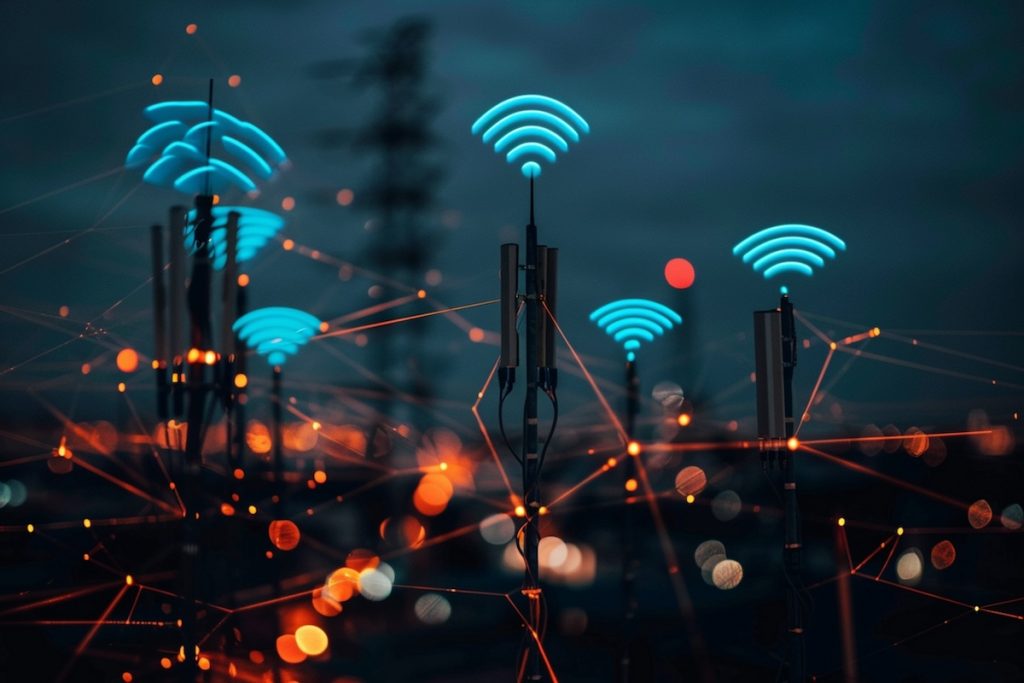Private Cellular Conquers Challenging Wireless Environments
For years, network connectivity for industrial environments ranked lower among business imperatives. Providing baseline coverage was considered the norm, and companies felt comfortable deploying their tried-and-true Wi-Fi networks to provide connectivity in factories, warehouses, food processing plants, and other facilities.
In recent years, however, the situation has totally changed. Enterprises are now relying on automated processes and equipment as part of their operations, and Wi-Fi networks that work perfectly fine in office settings are inadequate for providing the reliable, consistent, and secure connectivity industry now demands.
Private cellular networks are now considered the optimal network technology for these challenging settings, based upon superior coverage, enhanced security, and a better TCO outlook.
Where Private Cellular Succeeds
Consider a factory floor filled with robotic arms, myriad conveyors, and steel enclosures for operators, or a warehouse filled with floor-to-ceiling metal racks and cartons stuffed with materials. In both cases, the radio propagation of Wi-Fi signals is impaired, and adequate coverage will require an excessive number of access points (AP) that increase TCO, as well as add deployment and operational complexity. Similarly, the quantity of Wi-Fi APs needed to cover multi-acre outdoor venues can be ten to twenty times greater than private cellular—and these networks are more susceptible to man-in-the-middle and other security attack vectors.
For these unfavorable environments, the better choice is private cellular service.
Case #1 – Food processing facilities
Secure and reliable wireless coverage inside livestock production, processing, and distribution centers enables efficiencies in all areas of the plant, regardless of equipment and building construction. For example, a large poultry processing site operated by one of the largest producers in the U.S. had some 40 Wi-Fi APs deployed to cover 75 percent of the facility, with no connectivity inside freezers. After studying the plant’s infrastructure, a private cellular network design was prepared to provide nearly 100 percent coverage—including inside freezers and outdoor areas—using only 12 cellular APs. The APs utilized both cabled (where available) and wireless extension to connect all APs for network access and uplink. The resulting network use case offers better performance and less equipment to install, operate, and maintain.
Case 2 – Heavy industry and manufacturing
A global manufacturer of specialty chemicals and materials was looking to deploy wireless connectivity on its factory floors. At its chemical manufacturing plant in the Southeast, the company interconnected its existing Wi-Fi infrastructure, which only served the office areas of the plant, with a new private cellular network on the factory floor and outdoor areas of the facility. The mechanical environment of the factory had prevented the effective use of other wireless technologies on the factory floor. The cellular network is comprised of 19 indoor APs which cover nearly all of the operations floor, enabling better oversight, sensor management and monitoring, and worker safety.
Based on the success of this project, the company is studying deployment of cellular networks at other global sites.
Case #3 – Warehouse and distribution centers
An automobile manufacturer’s vehicle distribution center in the Southern United States needed a wireless network to support inventory management across a 37-acre outdoor parking area, as well as connectivity for handheld scanners utilized in receiving operations at the port located nearly a mile from the main campus. With a constant flow of vehicles in and out of the facility hosting thousands of vehicles at a time, a reliable and efficient outdoor wireless network comprised of five APs enables efficiencies in inventory logging and tracking, from receiving docks to loading for outbound shipments. The network includes a mesh configuration at the docks with wireless extension to the main campus where the mesh network also covers the parking areas.
Case #4 – Energy infrastructure applications
A Midwest engineering firm specializing in delivering comprehensive energy infrastructure solutions deployed a private cellular network at a solar energy collection site to enable monitoring and communications. Solar collection arrays span large areas and are constructed of materials that interrupt and deflect radio signals. The meshed four-node private cellular network deployed at the site offers reliable and fault-tolerant coverage throughout, supporting handheld tablets and mobile phones utilized by workers, as well as connectivity for instrumentation and sensors necessary for monitoring and management of plant operations. The firm is considering future deployments in conjunction with other energy infrastructure projects where wireless is both difficult to implement and desired for enhanced oversight and control.
Backhaul Efficiencies and Power
While private cellular connectivity offers superior coverage in these challenging environments, some deployment techniques such as implementing cellular mesh connectivity further enhance the efficiency of the network. For example, GXC’s patented wireless mesh approach allows highly efficient extension of network topologies not offered by other private cellular providers. Through this unique design, data being received and transmitted on behalf of subtending APs is managed through precise interleaving methods which allow full upstream and downstream bandwidth capacity to be utilized. This efficiency allows capacity needs to be met with fewer APs.
Cellular mesh allows the mesh node AP to act as a relay point for traffic to and from other AP nodes that can be located as far as two miles away. Devices connected to each mesh node can send and receive data that traverses the mesh to the LAN. This is different from the Wi-Fi mesh some IT professionals may be more familiar with, in which bandwidth at an uplink or intervening AP must be reserved for backhaul traffic, thereby limiting each device’s total throughput capacity.
In outdoor settings, regulations and private cellular frequency band characteristics allow substantial transmit power increases not available to Wi-Fi operations. This extends the coverage area for each AP and offers greater deployment flexibility to serve endpoint devices.
Cost Advantages
The simple cost calculation in private cellular networks often comes down to AP counts. With a 1:4 indoor AP ratio compared to Wi-Fi and as high as a 1:20 ratio outdoors, the cost of electrical power construction and AP installation offers savings at deployment. In operation, there are advantages in power consumption, efficiencies in network management of fewer nodes, and reduced maintenance and repair costs.
Built-in Security
In each of the cases described, the cost advantages of private cellular are important to the users. But in nearly every business, network operations costs garner less attention than managing the existential risks posed by hacking and security breaches. This is one area where private cellular deployments exceed other technologies.
Private cellular has the benefit of decades of built-in security developed for public cellular network operations. Inherent end-to-end encryption and deterministic connectivity across the network help to deter interception of private information or man-in-the-middle intrusions.
In addition, cellular networks require eSIM/SIM registration of any device accessing the network. The local registration and management of authorized endpoint devices enhances control, administration, oversight, access management, traffic administration, and data security. The locally controlled and closed network structure of a private cellular network also prevents intrusion and unauthorized access to data sources or servers from a compromised endpoint device.
Choose The Best Option
Technology decision makers should always seek the best-fit solutions that meet the unique needs of different parts of a business. Using this approach, deploying complementary wireless solutions such as private cellular networks in challenging transmission environments such as factory floors or large outdoor areas—combined with Wi-Fi in the office—can increase performance and security and protect both short- and long-term investments.
About the author
 This article was written by Allen Proithis, Ceo of CXC, a leading provider of an award-winning, private enterprise 5G networks, and the world’s only provider of private cellular mesh technology. In this capacity, he is responsible for all corporate strategy, product development, go-to-market activities and operations.
This article was written by Allen Proithis, Ceo of CXC, a leading provider of an award-winning, private enterprise 5G networks, and the world’s only provider of private cellular mesh technology. In this capacity, he is responsible for all corporate strategy, product development, go-to-market activities and operations.
